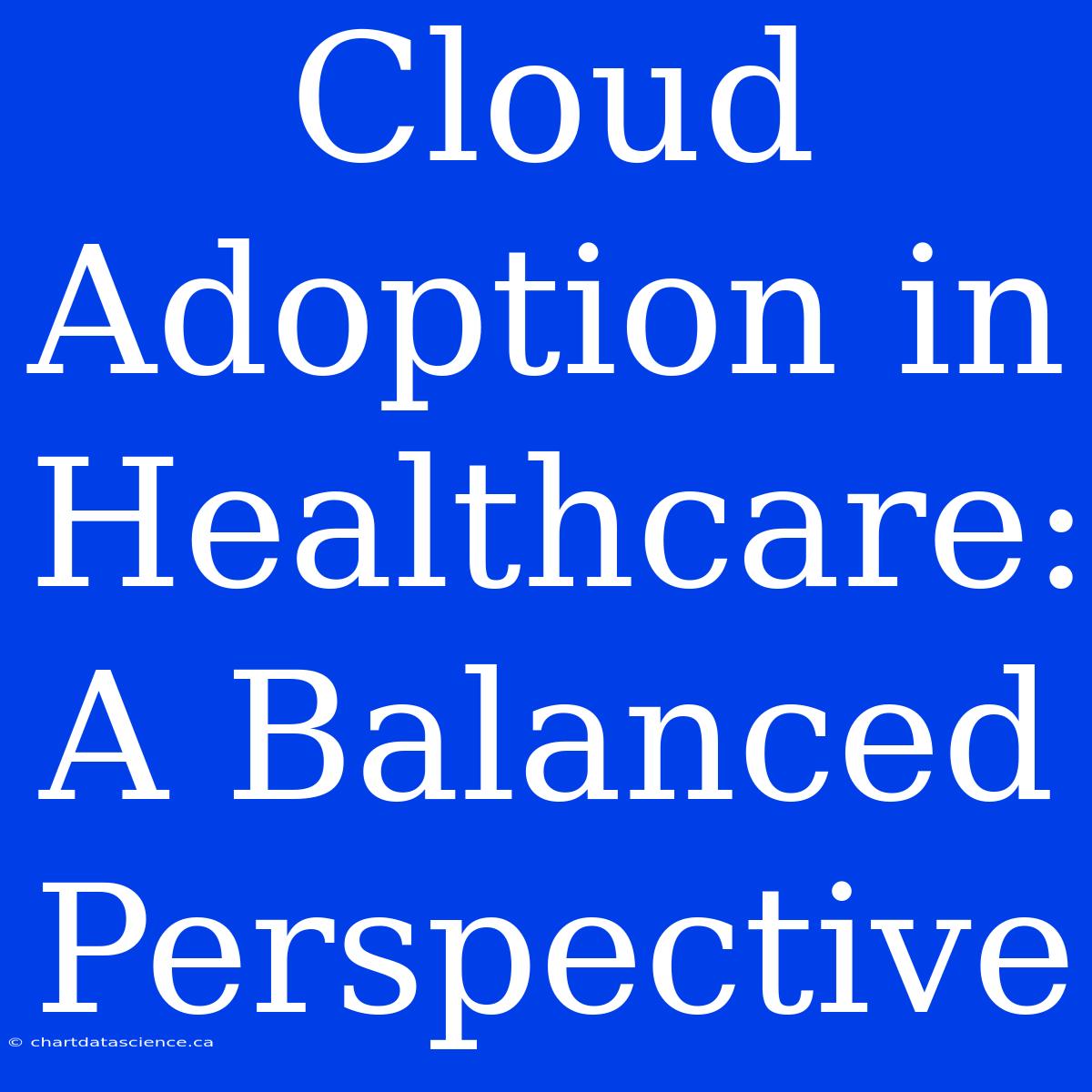Cloud Adoption in Healthcare: A Balanced Perspective
The healthcare industry is undergoing a digital revolution. From electronic health records (EHRs) to telemedicine, technology is transforming how we deliver and receive care. Cloud computing is playing a central role in this evolution, offering numerous benefits to healthcare providers and patients alike.
The Allure of the Cloud
Cloud adoption in healthcare is booming for a reason. Cloud solutions offer several advantages:
- Cost Savings: By shifting infrastructure and IT management to the cloud, healthcare organizations can reduce capital expenditures on hardware and software.
- Scalability: Cloud platforms allow healthcare providers to easily scale their IT resources up or down based on demand, avoiding the need for costly overprovisioning.
- Enhanced Security: Leading cloud providers invest heavily in security measures, often surpassing the capabilities of many on-premise IT environments.
- Improved Collaboration: Cloud-based applications facilitate seamless collaboration between healthcare professionals, regardless of location.
- Data Analytics: Cloud computing provides powerful tools for analyzing vast amounts of patient data, leading to better insights and personalized care.
Navigating the Challenges
While the benefits of cloud computing are undeniable, the healthcare industry also faces unique challenges in its adoption:
- Data Privacy and Security: Healthcare data is highly sensitive, so strict regulations like HIPAA must be adhered to. Cloud providers must demonstrate robust security measures and compliance with these regulations.
- Legacy Systems Integration: Many healthcare organizations rely on outdated systems that can be challenging to integrate with cloud-based solutions. This can create interoperability issues and impact data flow.
- Cost and Complexity: Migrating to the cloud can involve significant upfront costs and a complex transition process, especially for larger healthcare systems.
- Cybersecurity Threats: While cloud providers offer strong security, healthcare organizations still need to implement robust cybersecurity measures to protect against threats like ransomware and data breaches.
Striking a Balance
The key to successful cloud adoption in healthcare is finding a balance between the benefits and challenges. Here are some key considerations:
- Carefully select cloud providers: Choose reputable providers with a proven track record of security and compliance with relevant regulations.
- Develop a comprehensive cloud strategy: Before embarking on a cloud migration, carefully plan the transition and address potential challenges.
- Prioritize security: Implement strong cybersecurity measures, including multi-factor authentication, encryption, and regular security audits.
- Embrace the cloud-native approach: Consider adopting cloud-native applications designed for the cloud environment.
- Focus on interoperability: Ensure seamless data exchange between cloud-based systems and existing legacy systems.
The Future is Bright
Despite the challenges, the future of cloud adoption in healthcare is bright. By embracing the cloud and addressing the concerns responsibly, healthcare providers can improve patient care, enhance operational efficiency, and unlock new possibilities in the digital age.

